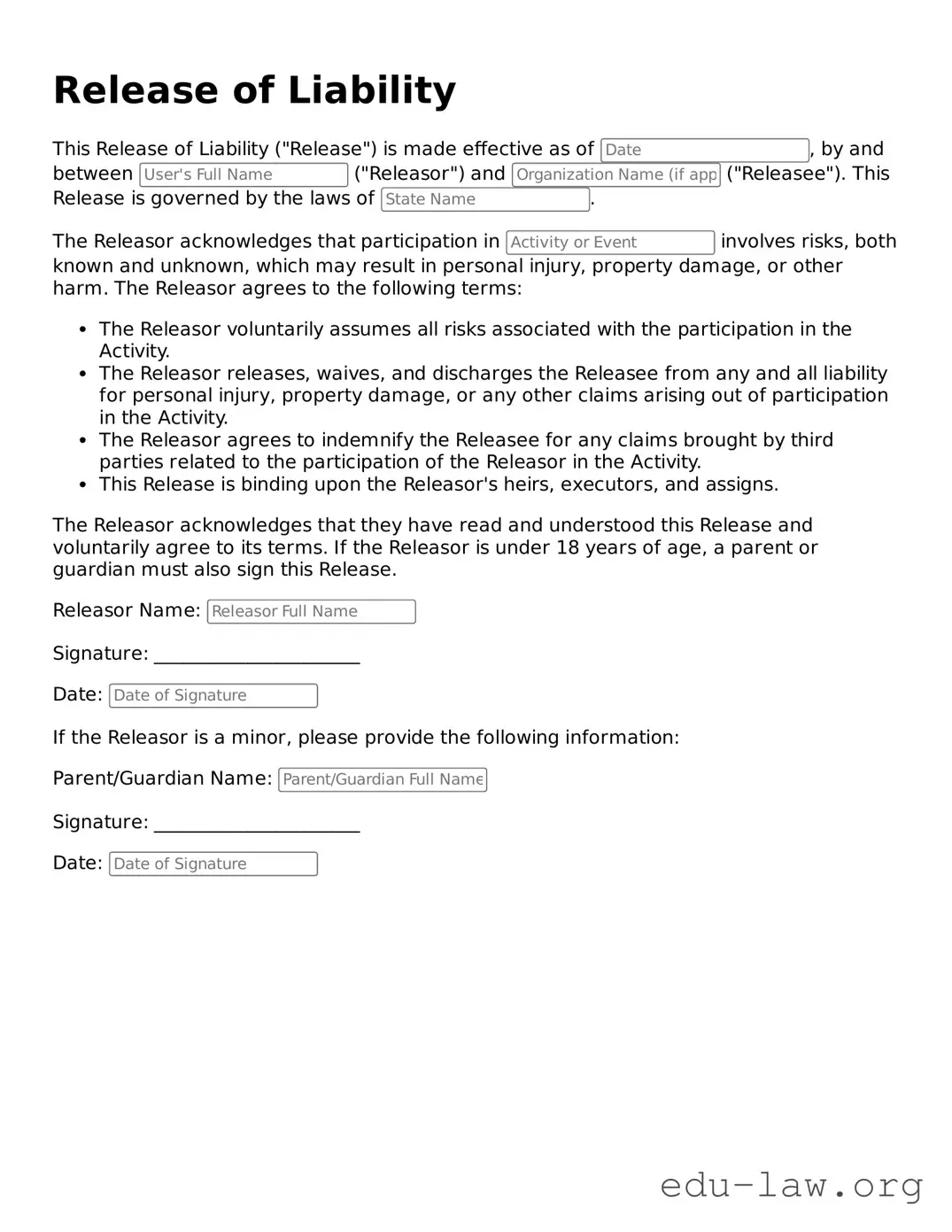A waiver of liability serves a function similar to a Release of Liability form. It is often used in activities that involve risk, such as sports or recreational events. Participants sign this document to acknowledge that they understand the risks involved and agree not to hold the provider liable for injuries or damages that may occur. This emphasizes personal responsibility while clarifying that the provider has taken reasonable steps to ensure safety.
An assumption of risk agreement also bears similarity to the Release of Liability form. In this document, individuals voluntarily acknowledge the inherent risks associated with a specific activity. By signing, they accept those risks and agree that they will not hold the organization responsible in case of injury. This agreement further reinforces the understanding that some risks are unavoidable, even with proper safety measures in place.
An injury waiver is another document closely related to a Release of Liability form. It specifically states that a participant releases the service provider from any claims related to injuries sustained during an activity. These waivers usually detail the types of injuries that could occur, and they stress that participants must accept the risk of such injuries when engaging in certain activities.
An indemnity agreement acts as a counterpart to the Release of Liability form. This document typically involves a party agreeing to compensate another for any claims, damages, or losses that may arise from an activity. With indemnity agreements, the focus is on financial responsibility rather than limiting liability, as individuals essentially agree to cover costs should they be liable for any injuries or damages incurred during an activity.
Non-disclosure agreements (NDAs), while often associated with confidentiality, can resemble Release of Liability forms in some contexts. Both documents establish boundaries regarding information and responsibilities. An NDA may prevent participants from disclosing proprietary information that could harm others, just as a Release of Liability form helps ensure that participants do not hold providers accountable for unforeseen injuries.
Consent forms also exhibit similarities to the Release of Liability form. These documents often require an individual's agreement before participating in a given activity, particularly in medical or research contexts. By signing a consent form, individuals acknowledge they have been informed of the nature of the activity and any associated risks, paralleling the acknowledgment found in liability releases.
Contractual agreements can share similarities with a Release of Liability form, particularly when they include clauses concerning liability. Such contracts may specifically outline the responsibilities of each party and detail any limitations on liability related to that agreement. The clarity offered by these contracts helps ensure that all parties understand their rights and obligations, thus minimizing future disputes.
Lastly, an event participation agreement often resembles the Release of Liability form. This document is used to outline the rules and conditions under which an individual may partake in a specific event. It generally includes provisions that limit the liability of the organizers for injuries sustained during that event, similar to the principles encapsulated in a Release of Liability form.
